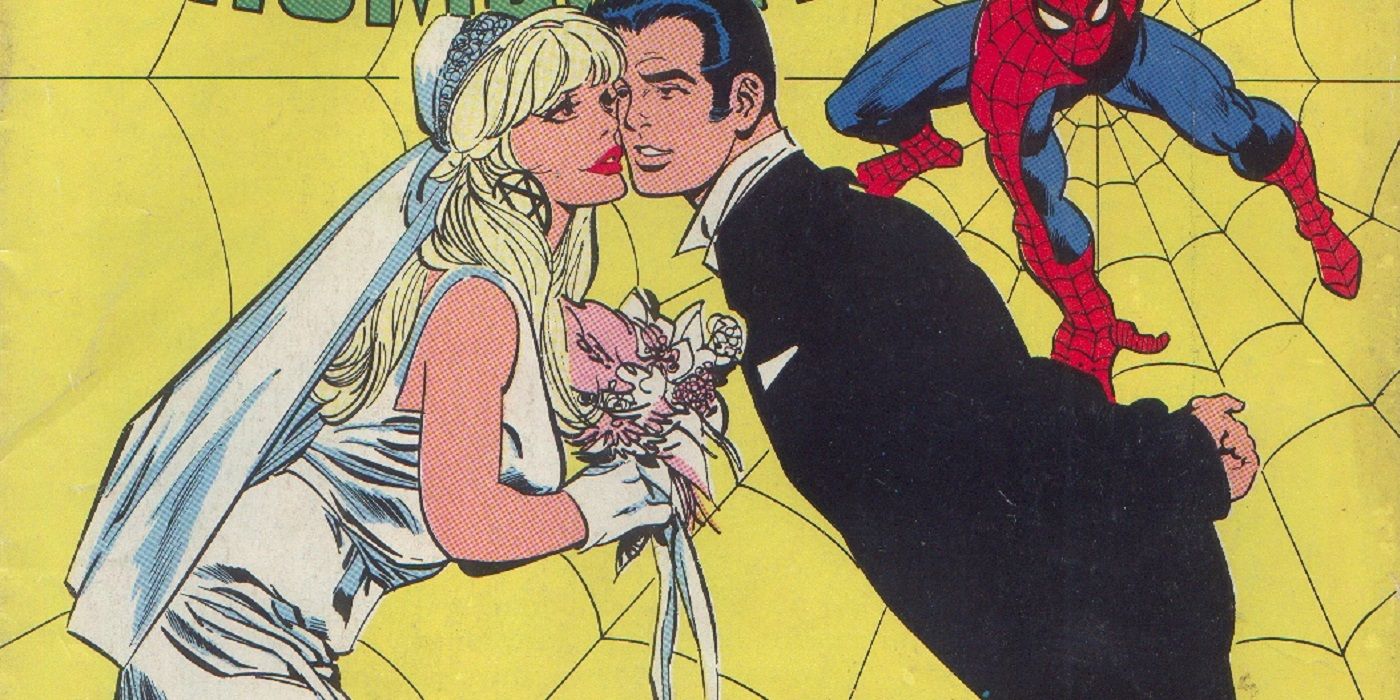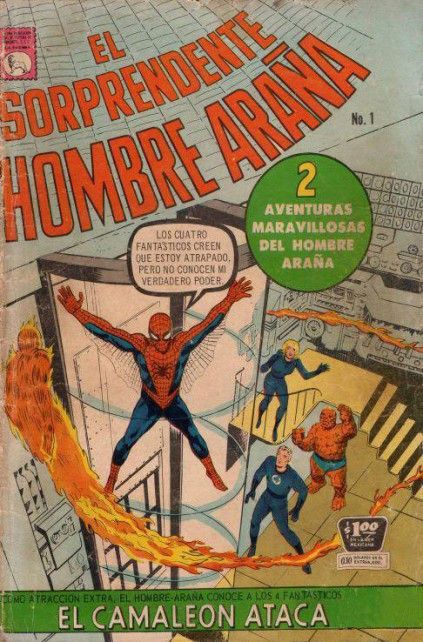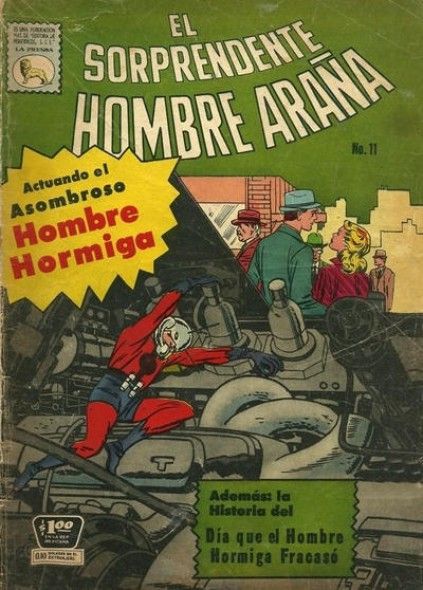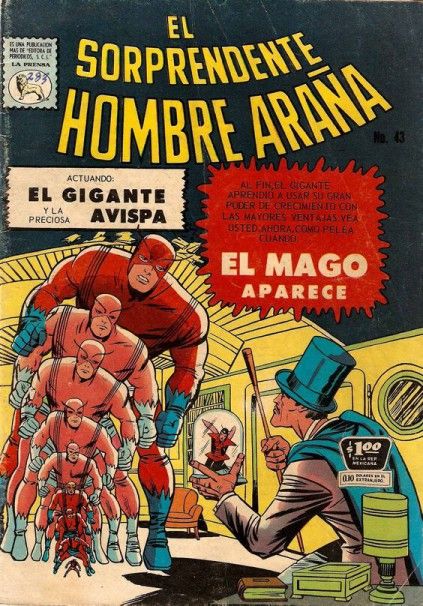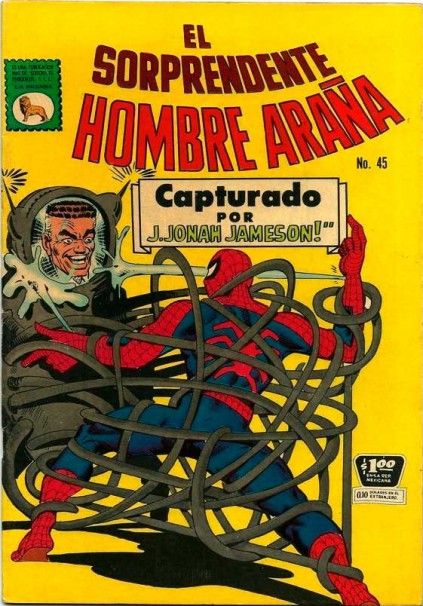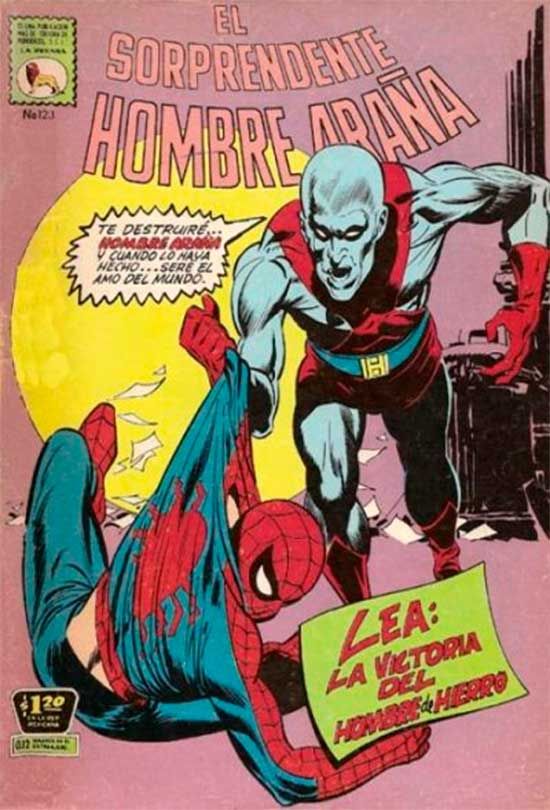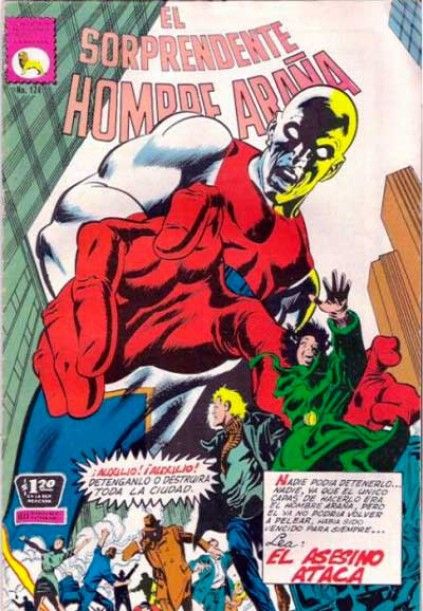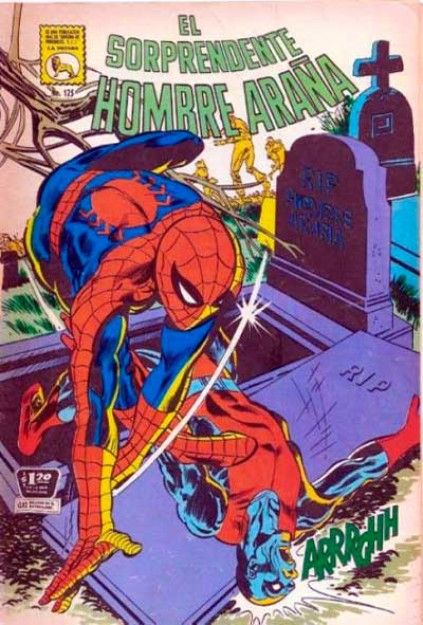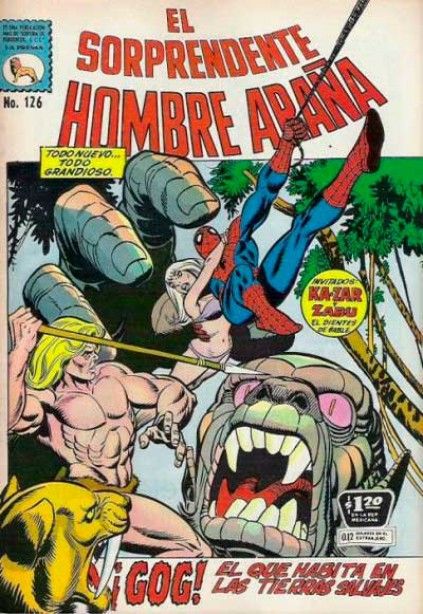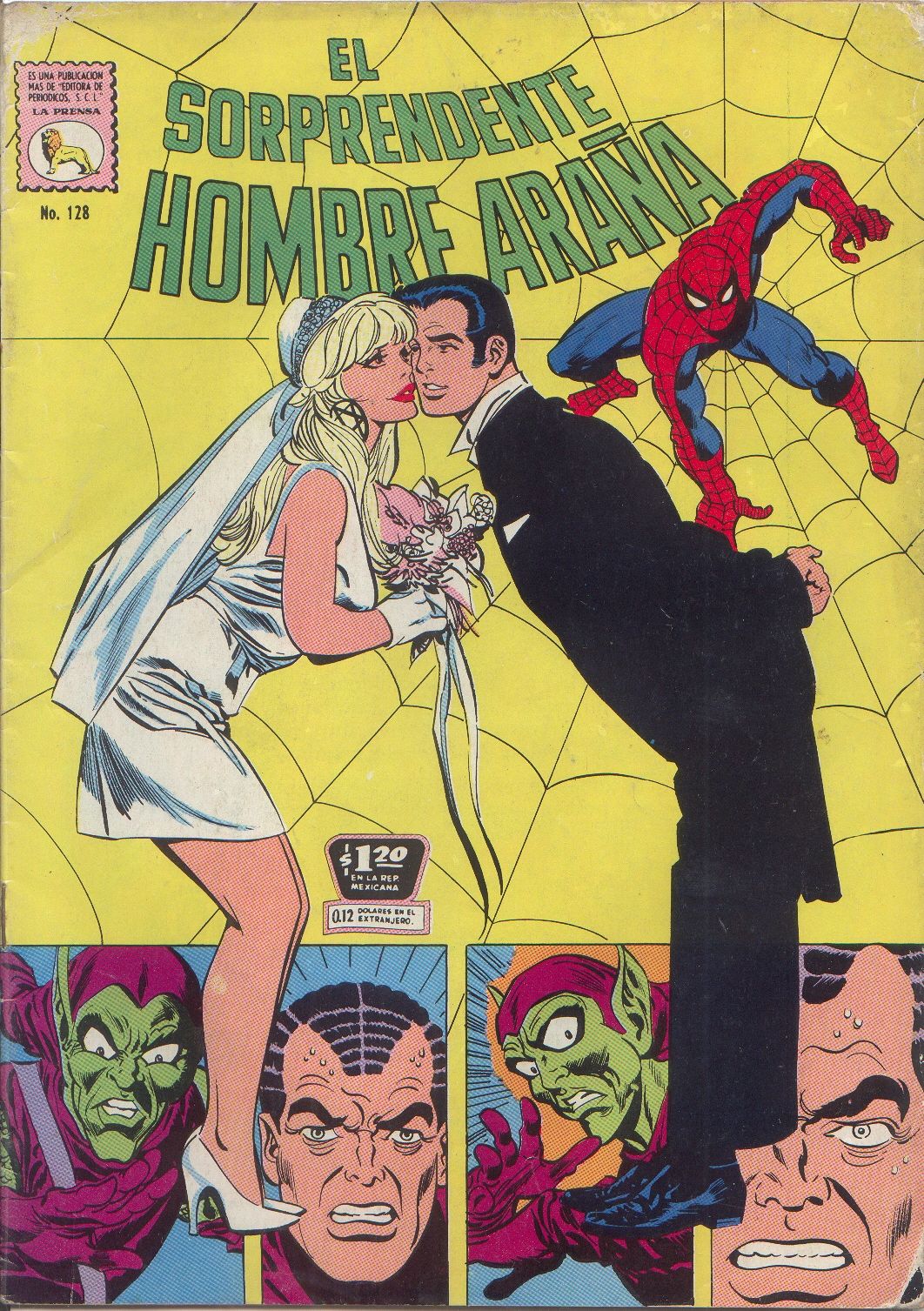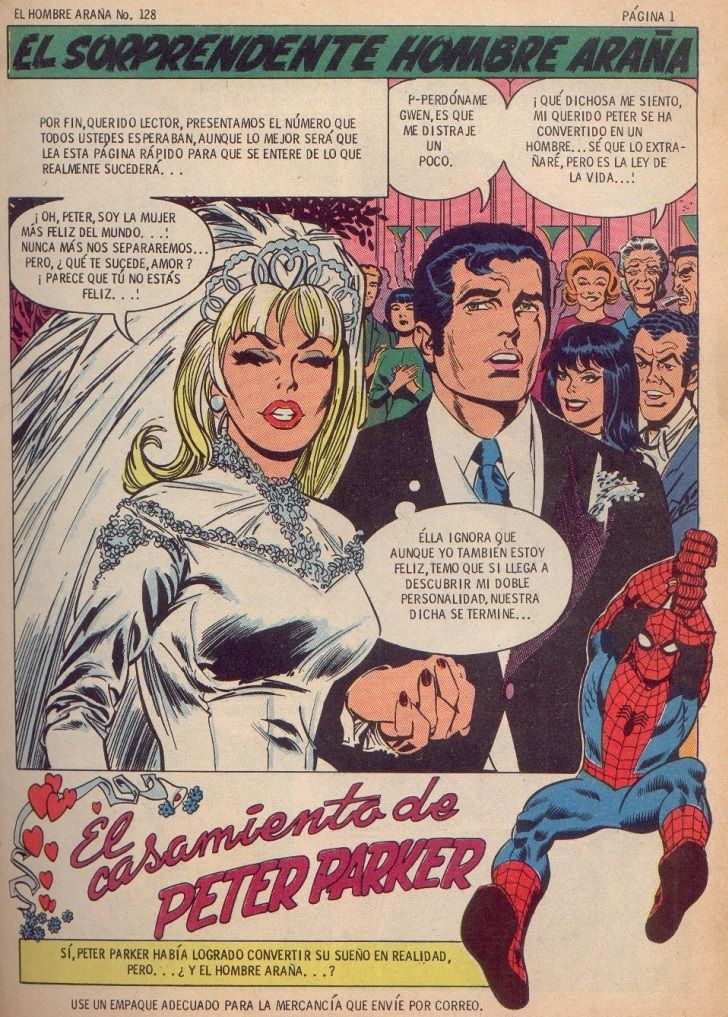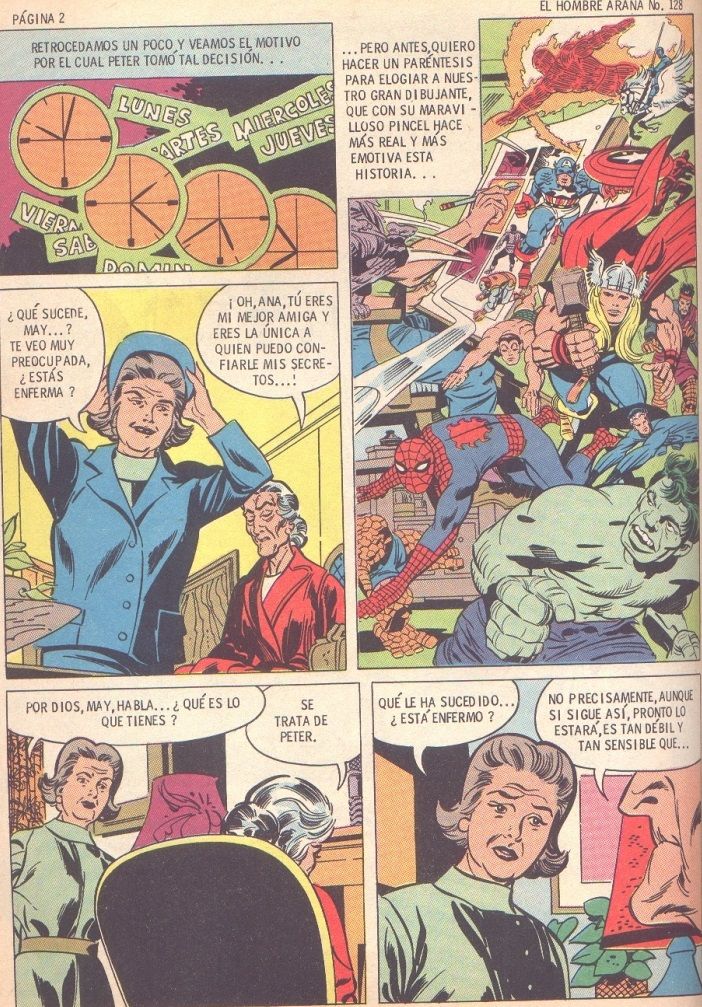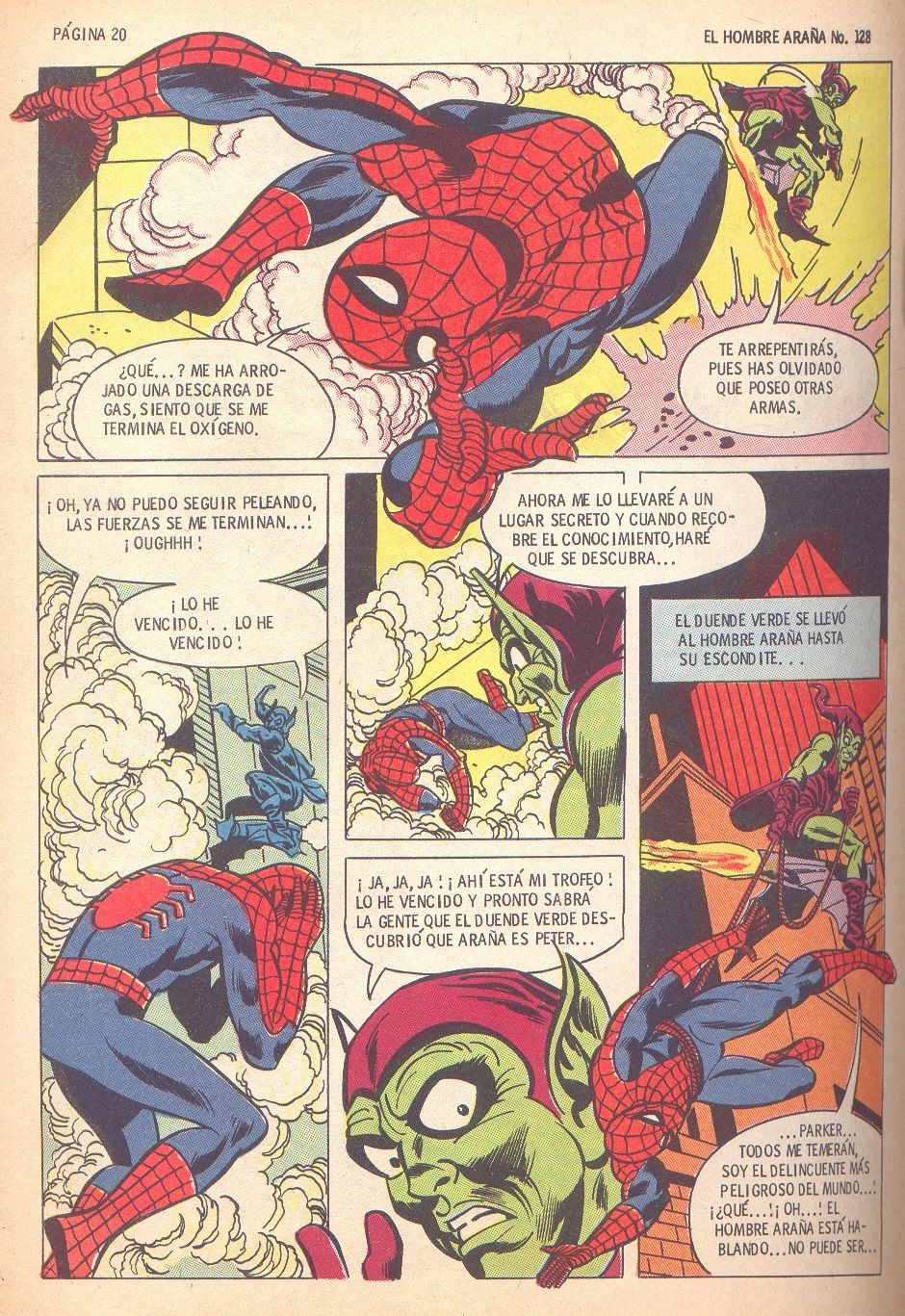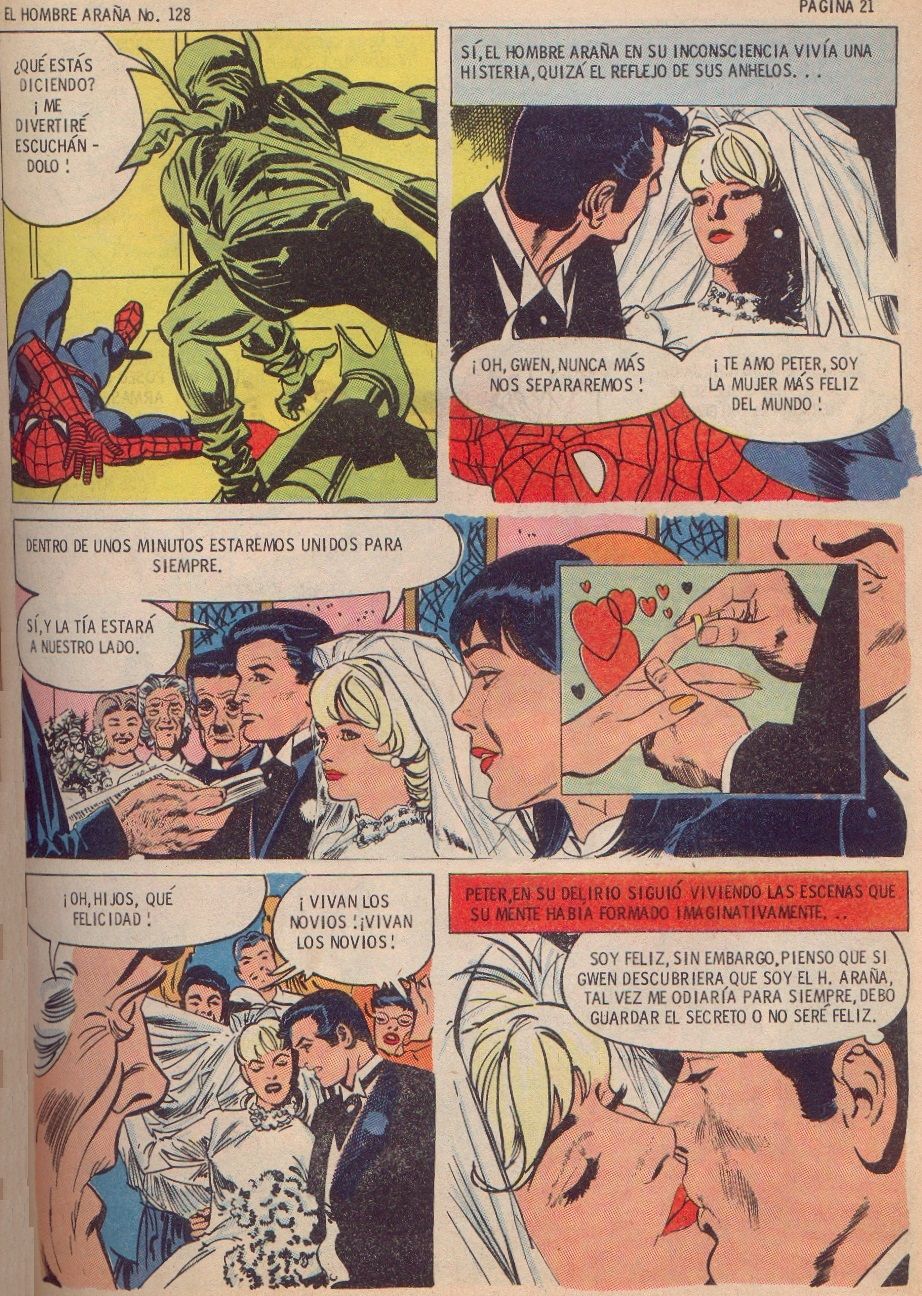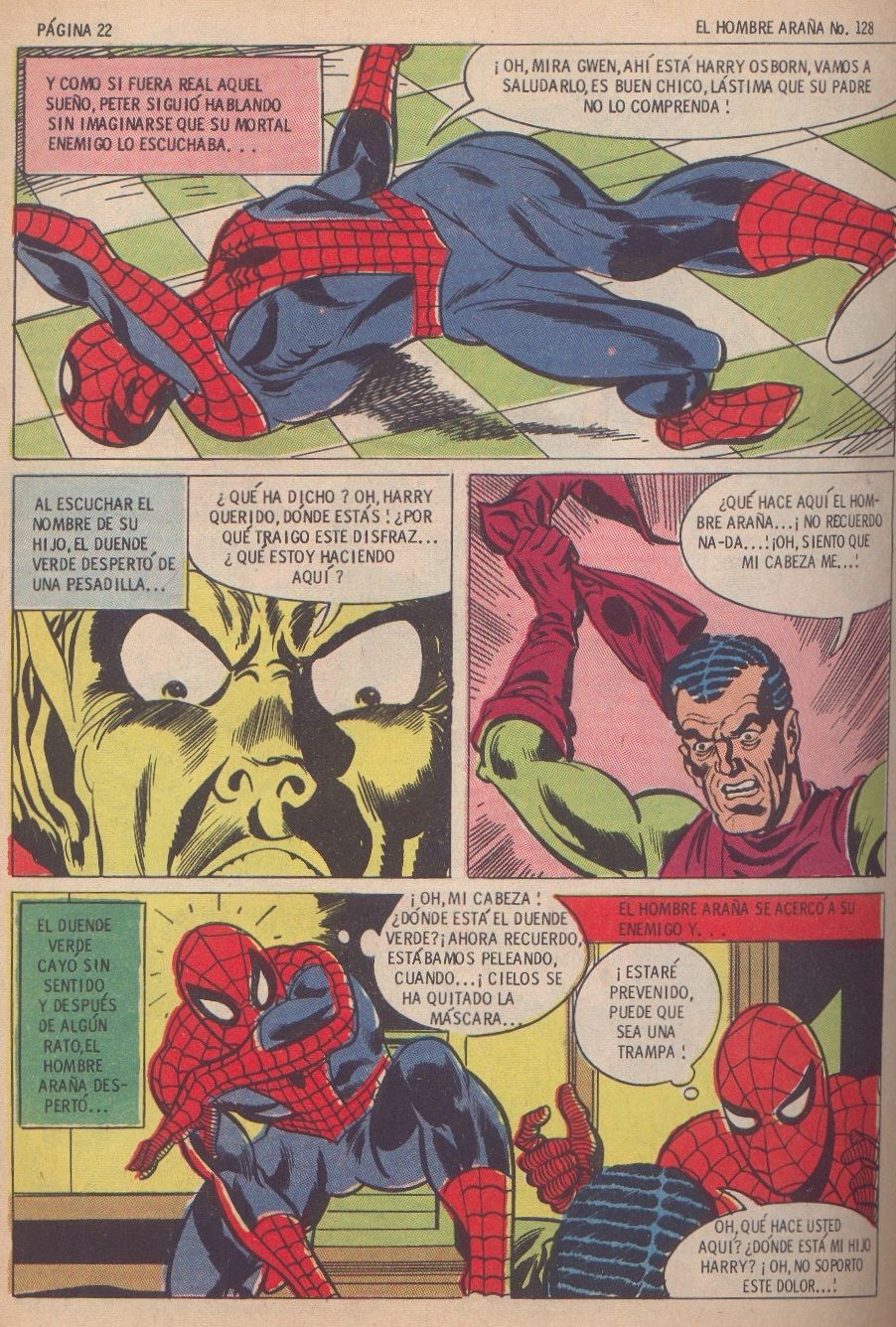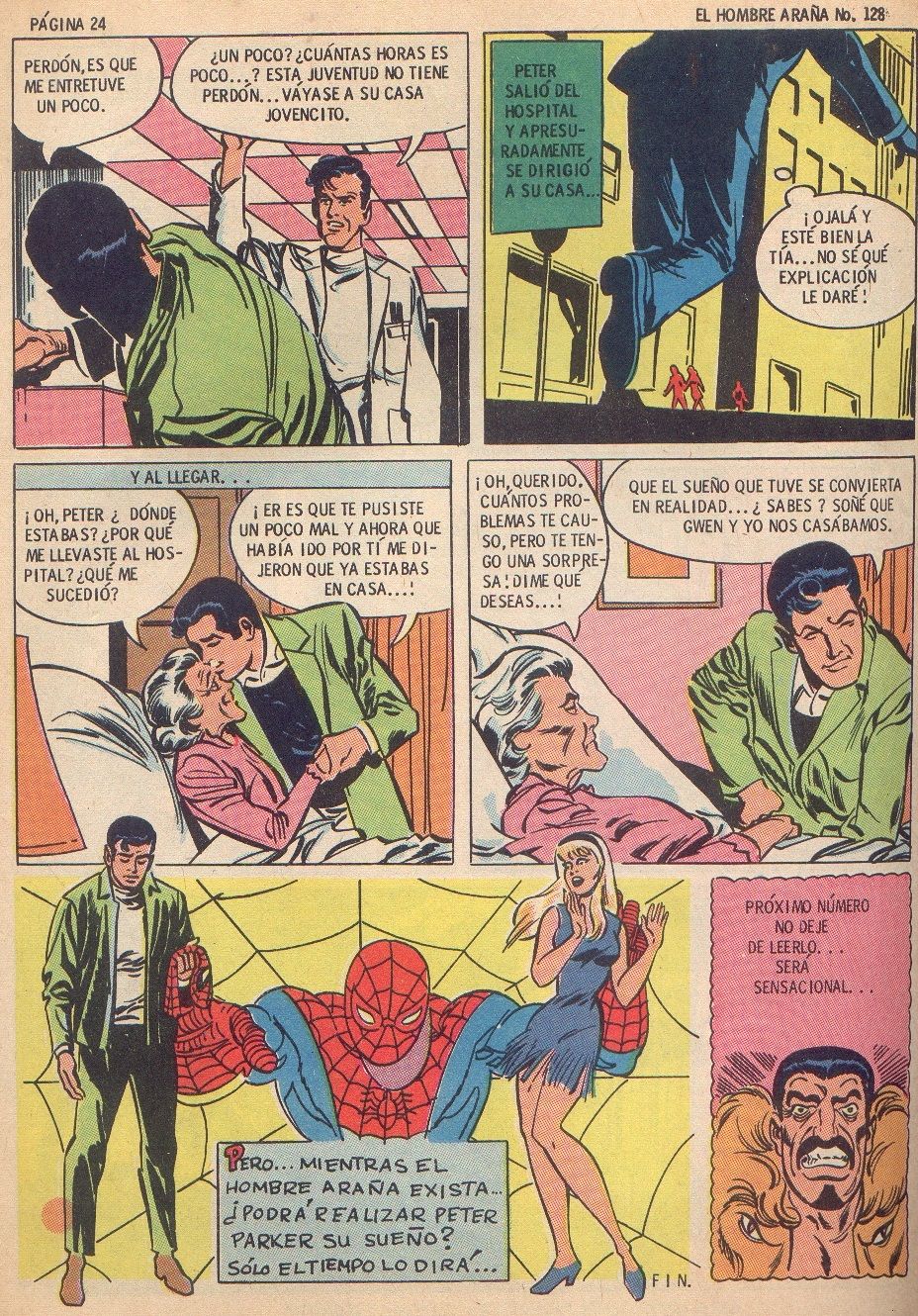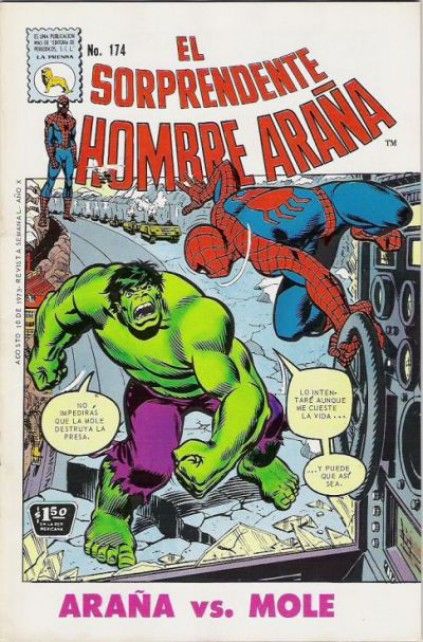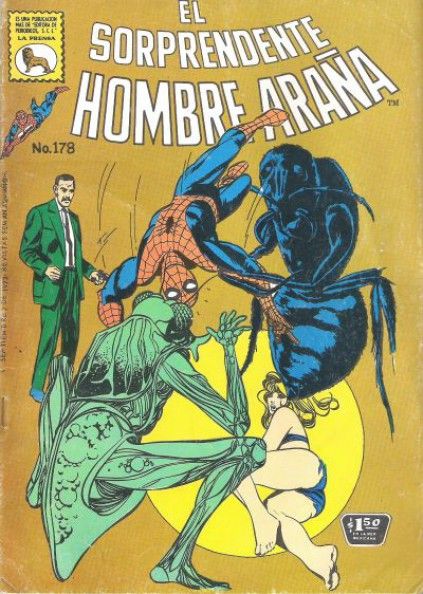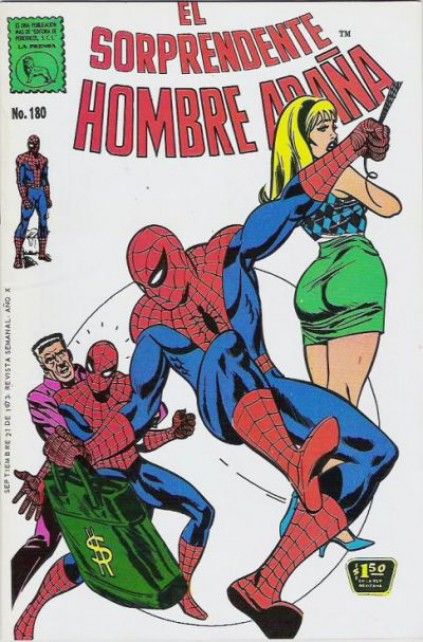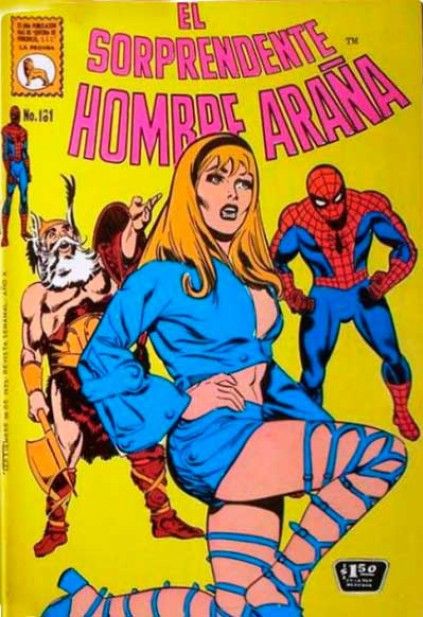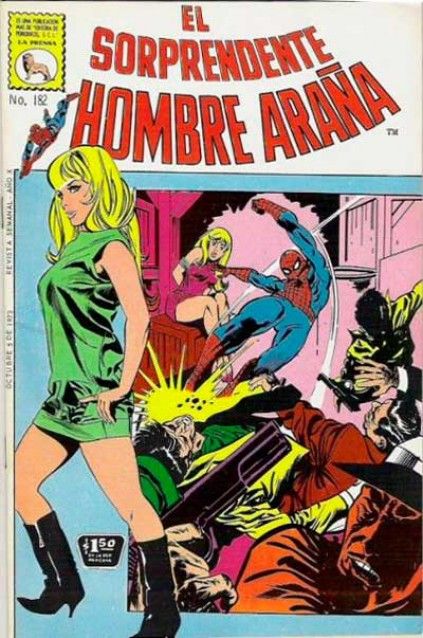Welcome to Comic Book Legends Revealed! This is the seven hundred and nineteenth installment where we examine comic book legends and whether they are true or false.Click here for Part 1 of this week's legends.NOTE: If the CSBG Twitter page hits 11,000 followers, I'll do a bonus edition of Comic Book Legends Revealed that week. Great deal, right? So go follow the CSBG Twitter page!
COMIC LEGEND:
Instead of killing off Gwen Stacy, the Mexican company that licensed Spider-Man from Marvel got permission to tell new stories with Gwen not only living, but marrying Peter Parker!
STATUS:
False, but with a lot of Truth mixed in there
The comic book world was abuzz this weekend by the story of Spider-Man stories that were only printed in Mexico! A bunch of people wanted me to write about this, but I'll credit CBR's own L.D. Nolan for pointing it out to me first.
It all started when twitter user David (comickeys) replied to a Twitter discussion started by the great Chris Ryall about what comic books people would like to see collected.
David explained that he would like to see the Mexican Spider-Man comic books that were created due to the death of Gwen Stacy.
In case you can't read the tweet, David said, "In the 1970's, publisher La Prensa did not believe Mexicans would read Spider-man after Gwen Stacy died. They created 45 original issues after Spiderman 119 where she lives, that have never been translated or reprinted. This is their marriage issue. Marvel needs to collect these!"
La Prensa did, in fact, license Marvel comic books in the 1960s through the late 1970s. It is true, too, that they did their own original Spider-Man comic books.
Beyond that, though, the story seems to be a bit different.
La Prensa began to publish Spider-Man comic books almost right away, in 1963...
Here's the problem with that. The books were SO popular that they decided to go bi-weekly with their comics instead of monthly. Since obviously there was not enough Spider-Man material available to meet that frequency, La Prensa then just substituted other Marvel comic characters, like Ant-Man...
Hey, Ants/Spiders, what's the difference?
Only, of course, they continued the book even when he was Giant-Man...
They also added in Avengers reprints, so despite the bi-weekly release schedule, they still managed to fall behind the Marvel publishing schedule.
Eventually, the book went back to monthly status and just began to reprint Lee and Ditko's Spider-Man stories in order...
They were roughly two years behind Amazing Spider-Man at that point. You might all notice, though, that if they were picking up Spider-Man in 1965, guess what was close behind? That's right, Ditko was soon going to leave the series. Once John Romita took over in the United States, sales continued to go up on the book (it was very popular under Ditko, as well, naturally, but sales kept going up under Romita). In Mexico, Romita's take on Spider-Man proved to be very popular.
So once more the frequency stepped up. That was fair enough since they had the leeway of the two year gap between the American comics and the Mexican comics, but obviously that margin was shrinking FAST.
Thus, as Edgar Olivares notes (and this is a Google translated quote, so please bear that in mind), "The need to have more material to publish from the superhero caused the director of La Prensa to travel to the United States, to the Marvel offices in New York, and request a special permission to the license they had acquired from the arachnid hero in order to publish material of their own, created with a 100% Mexican team.
The director of La Prensa did not arrive empty-handed. He had asked some artists of the publisher to do tests that he could show to Marvel, and demonstrate that they could generate their own licensed content. Marvel not only gave him permission to make his own comics, but also selected the artist in charge of performing the feat."
That artist was José Luis Durán.
Duran himself noted (also Google translated), "The director of the newspaper went straight to propose the test material to see if they would give him permission to make the new Spider-Man material, to fill the holes that were left in the monthly publication of the American comics, compared to Mexico that was biweekly. Then I began to draw with permission, not direct to Marvel but to La Prensa, which was the owner at that time of the license."
EL SORPRENDENTE HOMBRE ARAÑA #123 was the first of a three-part story that included new stories (with their own distinct version of an Iron Man-esque character)...
However, and this is the MAJOR point here, note that what followed was...
That's right, a reprinted issue of Amazing Spider-Man. The next issue that they would have reprinted had they not interjected the reprinted stories. That is what would happen, then, for the rest of the series' run (I am pretty sure that they went back to monthly status soon after). They would do new stories but then intercut them with the original American stories, as well. They would all be fit into the narrative.
EL SORPRENDENTE HOMBRE ARAÑA #128 is the so-called wedding issue...
And it seems to open with that...
But as you see later in the story, it's just a dream Spider-Man has while he is unconscious...
The issue ends with the standard "Spider-Man keeping Gwen and Peter apart" deal...
The comics continued to adapt the American Spider-Man comics...
Which were still at the point where Gwen was still alive. The fascinating thing is that they were now FOUR years behind the Marvel Spider-Man stories despite picking up their production schedule (again, I assume that they went back to the monthly schedule eventually but just kept the new format, as once you were allowed to tell original stories, why stop?).
In the end, they really did seem to try to put off the next story arc, which killed Gwen, as long as they could, with a number of new stories starring Spider-Man and, apparently, Gwen's ass...
and Gwen in all of her finery...
Durán was quite clear about his admiration for Gwen (specifically John Romita's version of Gwen).
La Prensa then lost the rights to Spider-Man. OEPISA (Editorial Organization of Publications and Impressions SA) then took over, and I believe they finally DID reprint Gwen's death (if not them, then someone else eventually did).
So, looking at the whole of it...A. Peter and Gwen didn't get married and B. While Gwen's death likely did have something to do with them putting reprinting Amazing Spider-Man #121 for quite a while, it does not seem as though Gwen's death was specifically the reason for this changeover, but rather a general attempt to avoid running out of new Spider-Man material. In that case, it is no different than when new material was done for British versions of comics (where the British versions were weekly and thus ran out of new material quickly, even when broken down into shorter weekly installments).
Thanks to Edgar Olivares for his great article on this topic and thanks to Tebeosfera.com for the covers!
Check out my latest TV Legends Revealed - Was Leonardo DiCaprio really kicked off of the set of Romper Room as a kid?
Check back later for the final part of this week's Comic Book Legends Revealed!

